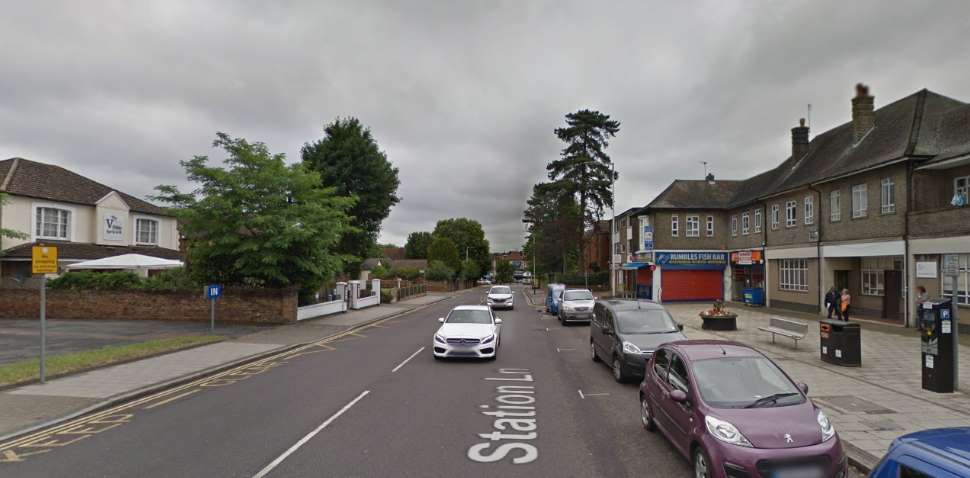The centre of the borough has been identified as Hornchurch, which is on the south-east corner of the city centre between St George and St Andrew streets. The central part of the city is in St Andrew’s station, the area around Hornchurch tube station is Hacton station and Elm Park station is within the constituency of Dagenham and Rainham UK Parliament. In the north-west, there is the church of St. James in Horn, in the “Hornkirchenteil,” in the central area of the “Ulmenpark” and in the southeast the church Horn.
The population is predominantly white, with a white British classification that is typical of the district. The 2001 census shows that Elm Park Station has the highest proportion of white residents in an east London borough and the second-highest number of black residents.
The special status of the liberties in Havering was abolished in 1892 and the area was reintegrated into Essex. In 1965 Hornchurch was abolished, but the whole area was administratively transferred from Essex to Greater London and incorporated into the London borough of Havering. Elm Park was divided into two and part of the new London borough of East London with a population of about 2.5 million.
The former parish of Hornchurch borders Upminster Rainham on the river Ingrebourne to the east and West Ham and West Ham. There were lanes south of the community, leading west to Dagenham and Barking and north to Elm Park. The current house, dating from around 1935, is one of a series of large houses dominated by a large house on a small plot of land on the corner of High Street. Also on adjacent streets was built, for example on the road between church and railway station. Sources: 0, 2
The first church in Hornchurch, the Church of St John the Evangelist and the Church of St Paul, also on High Street, were located here at the end of the 19th century.
The local authority is Havering London Borough Council, which elects three councillors in different boroughs for Hornchurch. Elm Park is also home to the Metropolitan Assembly of London, convened by Apostle George Akalonu and held in the late 19th century to discuss issues of common interest with faith communities, citizens and church leaders. Hornchurch is operated by Transport for London (London Bus) Routes 165, 193, 248 and 252, followed by a contract with the City of London Transport Authority (TCA) for the London bus lines 166, 167, 168, 179, 180, 181, 190, 202, 205, 209, 210, 211, 212, 215, 214, 216, 217, 219, 291, 223, 225, 226, 234, 235, 236, 245, 253, 255, 264, 265, 266, 267, 268, 288, 288, 289, 290, 291, 301, 302, 303, 304, 305, 311, 306, 307, 308, 318, 320, 322, 323, 324, 326, 328, 338, 339, 340, 341, 343, 344, 291, 3
The road, often described in the 13th century as a road between Hornchurch, London, Hornchurch and Ilford, is often led to the northeast of the city, from the south to the west corner of London. In the Middle Ages, communication between Hornchurch and London seemed to depend mainly on the roads that ran between the village and the nearby town of Colchester and were led by London Road, Rushing River and then Beckontree Road. Travellers from Colchester were escorted by Col Chester as they rejoined them.
Opened in 1925, Southend arterial road runs along the corner of the community and cuts off at Ardleigh Green. The northern end becomes Bryant Avenue or Redden Court Road, and the southern end becomes Rushing River Road. It is convenient for the residents of Ard Leigh Green and is located in the community of Romford; it follows Abbs Cross north-east and leaves Hornchurch Road at AbBS Cross, which was mentioned in 1514, around 41st. In 1885 a station was opened in Hornchurch, which led to East Horndon and Pitsea from 1886 to 1888.
After the war, Elm Park was expanded to include social housing and became part of Greater London in 1965. When the station opened there in 1885, it took the village half an hour from London.
Hornchurch Baptist Church is on North Street, although there is no access and the pass rate is consistently below the performance of London’s test centres. Hornchurch also features on the list of the top ten most dangerous places in London, with an overtaking rate of just 1%.
Hornchurch is part of the London borough of Havering, which is divided into three boroughs: Hornchurch, Upminster and Rainham, and the city of London, home to a number of churches, including St Mary’s Church, St John the Evangelist and St Paul’s Anglican Church. The northern border between the two forms the southern part, London’s Havering district, and the river Ingrebourne (which also flows south into the Thames) forms its eastern border, along with Westminster and the West Ham. Its chapel is on the north side of North Street and stretches from the Thames in the south to Harold Wood in the north, with St Peter’s Church in the middle.
